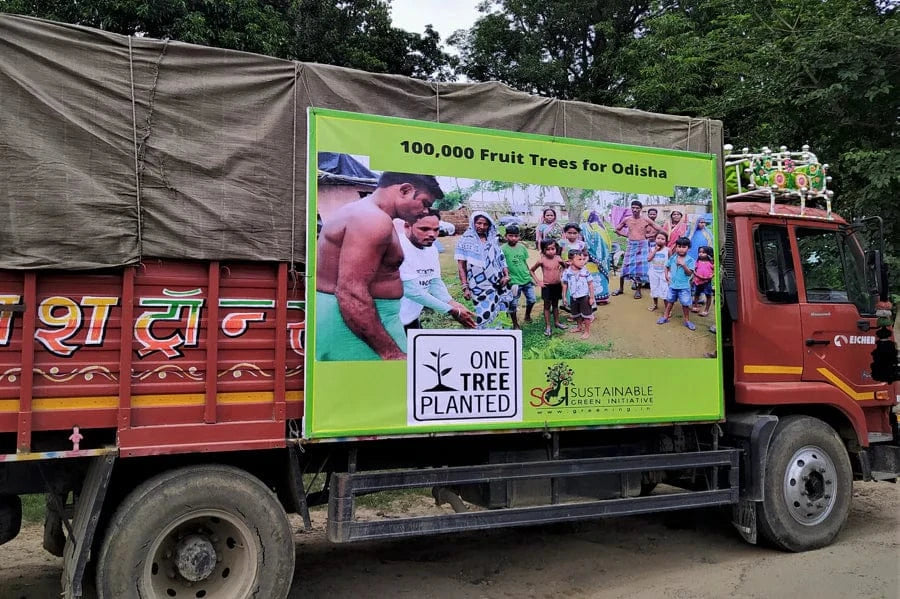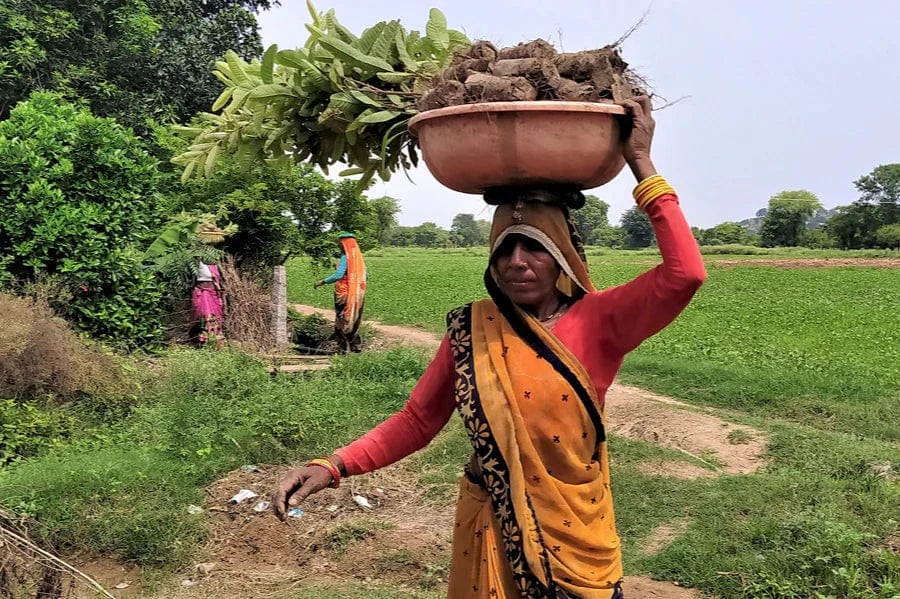300,000 Trees Planted in India for Disaster Relief, Biodiversity, and Social Impact

Get news, updates, & event Info delivered right to your inbox:
300,000 Trees Planted in India for Disaster Relief, Biodiversity, and Social Impact
What began as a relatively small environmental disaster relief project in India in early 2019 has now resulted in 300,000 trees planted, with plans for many more in 2020! Thanks to your support, we are honored to contribute to reforestation efforts throughout India for a multitude of environmental and social benefits, and we'd like to share these stories with you today.
In Uttar Pradesh, moringa trees were planted as a solution to areas prone to drought. In West Bengal, mangrove trees were planted for climate resilience in the Sundarbans. And in Odisha, fruit trees were planted after cyclone Fani resulted in many families losing their food-producing gardens.

100,000 Moringa Trees Planted in Uttar Pradesh
Bundelkhand (the region in which Uttar Pradesh is situated) is an arid, drought prone area in central India, which has been experiencing severe drought since 2007. The rainfall here has also been decreasing year after year. It is normal for this region to experience a monsoon season between June and October - which typically provides 90% of the precipitation for the entire year - but the season has not been delivering as much rainfall as it has in the past.
Home to a large tribal population, Uttar Pradesh is further affected by hunger and poverty with child malnutrition rates among the highest in Asia.
The moringa trees which were planted in Uttar Pradesh provide many benefits. When pruned early, they will stay low and spread like a shrub, making it very easy to harvest the leaves, flower, and pods - all of which are high sources of minerals and vitamins to combat infant malnutrition. Moringa is also known to grow extremely fast, and its leaves can be harvested every two months thereby providing a constant source of food and nutrition in arid and infertile areas. The leaves of the moringa tree are an excellent source of vitamins A, B, C, and many minerals. Not only will the newly planted trees help provide health benefits, they will also help mitigate the drought issue as trees help replenish water supplies in soil.
100,000 Mangrove Trees Planted in Sundarbans
The Sundarbans is known as a mangrove forest, including the Sundarbans National Park which was declared a UNESCO World Heritage site in 1987. The ecosystem in the Sundarbans is considered a natural wonder of the world due to its bird, fish, mammal, and amphibian biodiversity, as well as being known as one of the most famous tiger zones on the planet - home to the endangered Bengal Tiger. A large concern for the area is its rising sea levels due to climate change. Areas of coastal land have already collapsed through the years from aggressive storms. But restoring mangrove trees will provide many benefits to the Sundarbans, including reducing the impact of rising stormwaters, enhancing biodiversity, and providing a social impact to local communities via climate resilience and healthy fisheries.
These mangroves become breeding nurseries for small fish, crab, and other crustaceans, all while sequestering carbon and acting as a protective buffer zone for the community against tidal waves and cyclonic storms. This project of 100,000 trees also served as a pilot project, and we are now preparing to plant over 1 million mangrove trees in this area in 2020.
The truly extraordinary thing about mangroves is that they love both land and sea, growing happily along coastline ecosystems with their roots in water and their leaves in the sun. The planted process is illustrated in the video above, which has to be conducted very thoughtfully during a short window of time during the day in low tide. But don't worry, the little trees won't drown when the tide comes in; they will establish their roots and continue to grow as they reach upwards towards the sun, sometimes submerged and sometimes exposed over time.



100,000 Fruit Trees Planted in Odisha for Cyclone Fani Recovery
In May of 2019, Cyclone Fani made landfall in the Indian state of Odisha off the country's eastern coast. As the biggest storm to hit India in 20 years, Fani uprooted several million trees. A significant portion of these trees were in the city of Puri, maintained by small-holder farmers who grew them for both food and income. The environmental destruction resulted in a loss of nutrition, health, and survival - along with a loss of biodiversity and climate balance. The overall economic damage is estimated to be over 8 billion dollars, with many families losing their homes and livelihoods.
But just as people must rebuild their lives and infrastructure, nature must also be restored, and that's where One Tree Planted was able to help. Through reforestation of a variety of fruit trees, including the addition of beneficial compost to help restore the soil, this project was able to reduce deforestation of natural forests, restore soil quality for future regeneration, and improve rural living standards and nutrition for families.
Thanks to our amazing on the ground partners and volunteers, we have been able to get many trees into the ground in India and we are nowhere close to finished! We have some pretty exciting projects in store for India in 2020.
Thanks for your support in the amazing work being done in India and many other reforestation projects we have around the world.
Feeling inspired? Support reforestation in places like India today!
Get news, updates, & event Info delivered right to your inbox:
Related Posts
9 Sustainable New Years Resolutions
18/12/2025 by Meaghan Weeden
Inspirational Quotes About Trees
16/12/2025 by Meaghan Weeden
The 9 Oldest, Tallest, and Biggest Trees in the World
11/12/2025 by One Tree Planted
Popular On One Tree Planted
Inspirational Quotes About Trees
16/12/2025 by Meaghan Weeden
The 9 Oldest, Tallest, and Biggest Trees in the World
11/12/2025 by One Tree Planted
What Causes Deforestation?
10/07/2025 by Meaghan Weeden
Fundraising Disclosures

Be Part of the
Restoration Movement
The Grove is more than just a monthly giving program: it's a vibrant community of individuals who are dedicated to reforestation and environmental restoration on a global scale.
As a member of The Grove, you affirm your commitment to restoring forests, nurturing biodiversity, and fostering positive global change.



